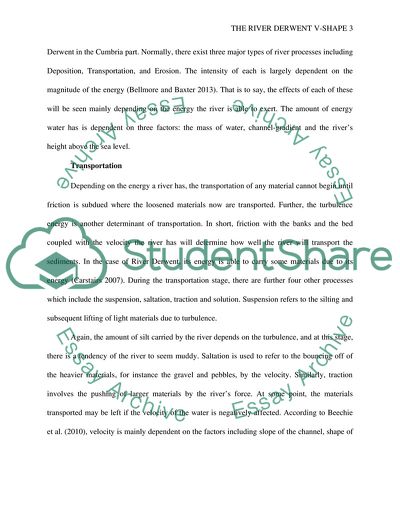Cite this document
(V-Shape of River Derwent Essay Example | Topics and Well Written Essays - 1500 words, n.d.)
V-Shape of River Derwent Essay Example | Topics and Well Written Essays - 1500 words. https://studentshare.org/geography/1856120-bbriefly-discuss-the-processes-operating-within-the-river-system-that-have-produced-and-maintain-the-channel-habit-shown-here-on-the-river-derwent-just-downstream-of-grange-in-borrowdale-cumbria-ny-254175
V-Shape of River Derwent Essay Example | Topics and Well Written Essays - 1500 words. https://studentshare.org/geography/1856120-bbriefly-discuss-the-processes-operating-within-the-river-system-that-have-produced-and-maintain-the-channel-habit-shown-here-on-the-river-derwent-just-downstream-of-grange-in-borrowdale-cumbria-ny-254175
(V-Shape of River Derwent Essay Example | Topics and Well Written Essays - 1500 Words)
V-Shape of River Derwent Essay Example | Topics and Well Written Essays - 1500 Words. https://studentshare.org/geography/1856120-bbriefly-discuss-the-processes-operating-within-the-river-system-that-have-produced-and-maintain-the-channel-habit-shown-here-on-the-river-derwent-just-downstream-of-grange-in-borrowdale-cumbria-ny-254175.
V-Shape of River Derwent Essay Example | Topics and Well Written Essays - 1500 Words. https://studentshare.org/geography/1856120-bbriefly-discuss-the-processes-operating-within-the-river-system-that-have-produced-and-maintain-the-channel-habit-shown-here-on-the-river-derwent-just-downstream-of-grange-in-borrowdale-cumbria-ny-254175.
“V-Shape of River Derwent Essay Example | Topics and Well Written Essays - 1500 Words”. https://studentshare.org/geography/1856120-bbriefly-discuss-the-processes-operating-within-the-river-system-that-have-produced-and-maintain-the-channel-habit-shown-here-on-the-river-derwent-just-downstream-of-grange-in-borrowdale-cumbria-ny-254175.


